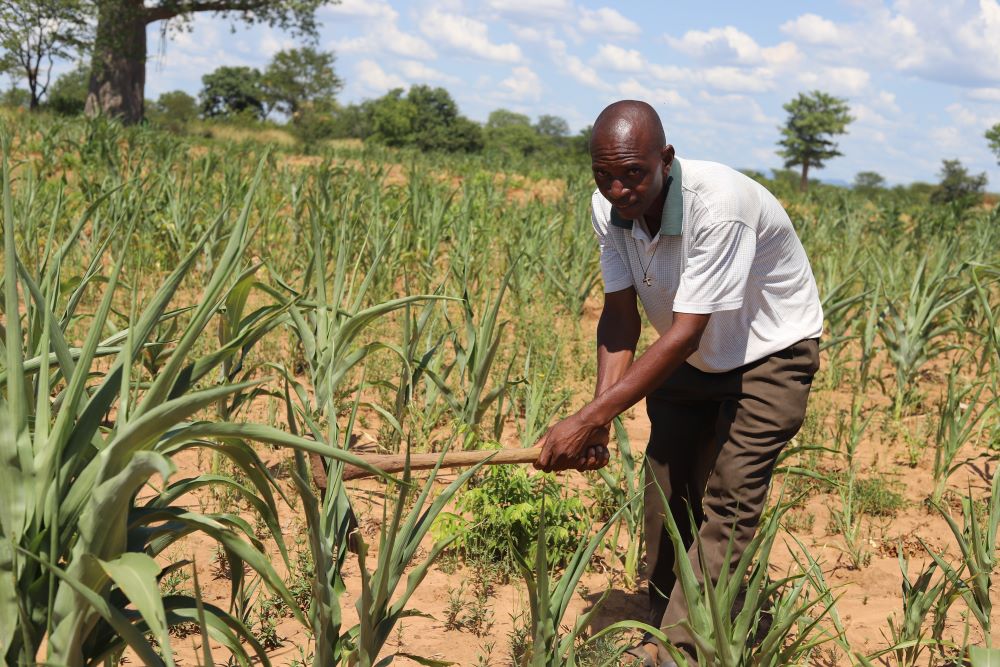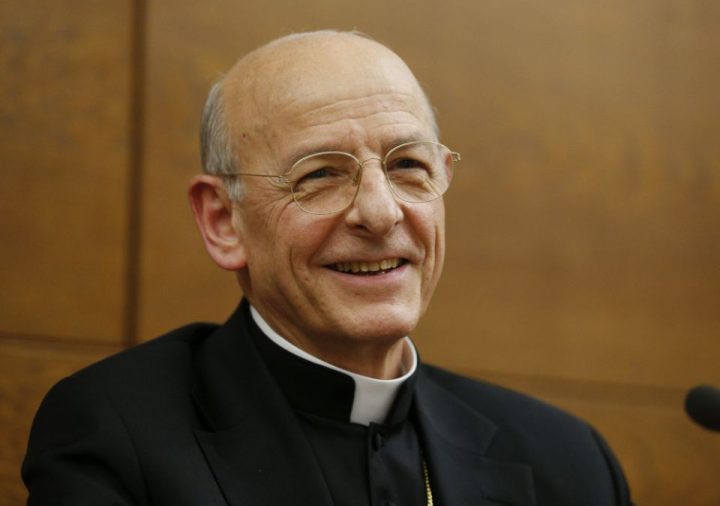
Under the scorching sun in this southern region of Zambia, Highly Hangoma and his neighbors are busy planting trees in their degraded farmland to increase carbon stock and mitigate the effects of climate change in their communities.
For the last decade, Hangoma has watched his community’s land slowly turn from lush farmland to desert. Years of deforestation, overgrazing, overcultivation and climate change, he said, have robbed the soil of its nutrients, resulting in poor yields and pushing millions into hunger.
« Our farms used to produce enough food to sustain our families, and we could sell some as we waited for the new planting season, » said the 52-year-old father of six. « But now, the land doesn’t produce much, is often dry, and floods when it rains. The degraded soil makes our farms less fertile and unable to provide nutrients to plants. »
With the help of Catholic Relief Services, or CRS, Zambia, Hangoma and his neighbors have decided to make a change. For the last year, Hangoma’s community has been restoring the forest that had almost disappeared to increase the fertility and production of their soil. The community, too, has embarked on a journey to conserve part of their land to mitigate climate change and adaptation.
‘Trees are a source of life.’
—Fr. Christopher Dabu
Hangoma said the community has likewise been practicing sustainable agriculture that includes rotating crops and embracing diversity, eliminating tillage, planting cover crops and perennials, integrating livestock and crops, applying integrated pest management, and adopting agroforestry practices to restore their degraded land.
« CRS has taught us how to restore our land and given us enough resources to help us implement what they have taught us, » said Hangoma. « Therefore, the earlier more people know the importance of planting trees and practicing sustainable agriculture, the better it will save our land from destruction. »
Hangoma’s community is among dozens of communities in this southern African country of more than 20 million people benefiting from CRS training and financial support (to buy seedlings and establish nurseries) to restore their degraded land and help improve their livelihoods and the environment.
For decades, the landlocked country has been ranked globally as one with the highest rates of deforestation and degradation, estimated at 250,000-300,000 hectares (618,000-741,000 acres) of forest loss per year, according to a report by the United Nations Convention to Combat Desertification, or UNCCD. However, the report shows that in recent years, the rates have reduced to about 176,000 hectares (435,000 acres) per year.
Recent studies show that up to 90% of Zambia’s households depend on wood fuel (charcoal and firewood) for their energy requirements. This situation has led locals to clear the country’s forests and woodlands.
CRS officials told EarthBeat that these human activities have severely contributed to land degradation, leading to poor crop harvests. As a result, there are high rates of poverty, migration of young people from rural areas to towns in search of jobs, hunger and malnutrition, especially among children.
« People in Zambia are poor, and they engage in activities that destroy the environment to earn a living, » said Dickson Matulula, the green initiatives project manager for CRS Zambia. « Since most people are farmers, they overgraze and overcultivate and also cut down trees to make charcoal, which they sell to earn a living, not knowing that the charcoal business is terrible and leads to land degradation. »
Matulula said his organization engages local communities in land restoration activities in southern Zambia, the most affected region, focusing on sustainable livelihoods. Since 2023, the organization has been visiting villages monthly to train farmers in tree planting and care, seedling care and sustainable agriculture.
« The approach we have used to address the degradation is in two forms: We are promoting agroforestry and re-greening or general tree planting, » said Matulula. « We are working with farmers by planting some nitrogen-fixing trees. We plant trees alongside other crops to restore the degraded lands. »
Fr. Christopher Dabu of St. Kizito Parish, Lusitu, said he talked about the practices during Sunday Mass, encouraging locals to practice agroforestry in their existing fields and set a portion of land aside where they can plant different types of trees focused on land restoration and climate adaptation.
« I lead by example here by practicing agroforestry and tree planting on my farm, » said Dabu, a native of the southern region. « The coming of CRS to this area is like living the pope’s Laudato Si’ vision of taking care of Mother Earth. The Catholic Church is committed to conserving the environment, and if we can get other organizations with the same goal, we can work together to take care of Mother Earth so that it can care for us. »
Advertisement
The priest encouraged those who had received the training to spread the word to other community members so that everyone could restore their land and forests and achieve inspiration for the U.N. Decade on Restoration, which officially launched at the beginning of 2021.
Dabu focuses on trees « because they help restore the land to be better and allow the air to be fresh, and they also provide shade, » he said, noting that he visits different groups in various communities with a message to restore their degraded land. « My message is always to tell people to plant trees and not cut them. Trees are a source of life. »
Hangoma notes that the future looks bright with the skills he has obtained from CRS. He says his degraded three-acre farm is slowly restoring its shape through agroforestry and tree planting. He has established more nurseries where he sells seedlings to other farmers to earn a living enough to take care of his family.
« This restoration program is working, and I will continue to plant more trees and encourage fellow community members to do the same, » he said.



